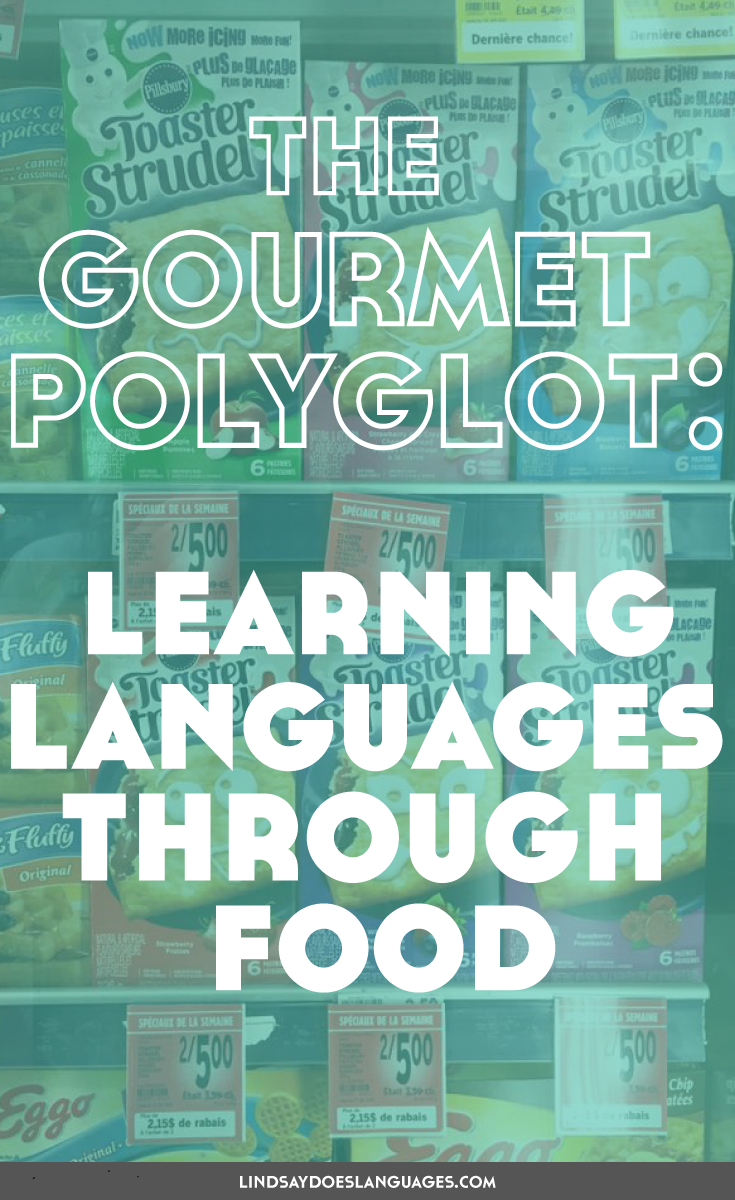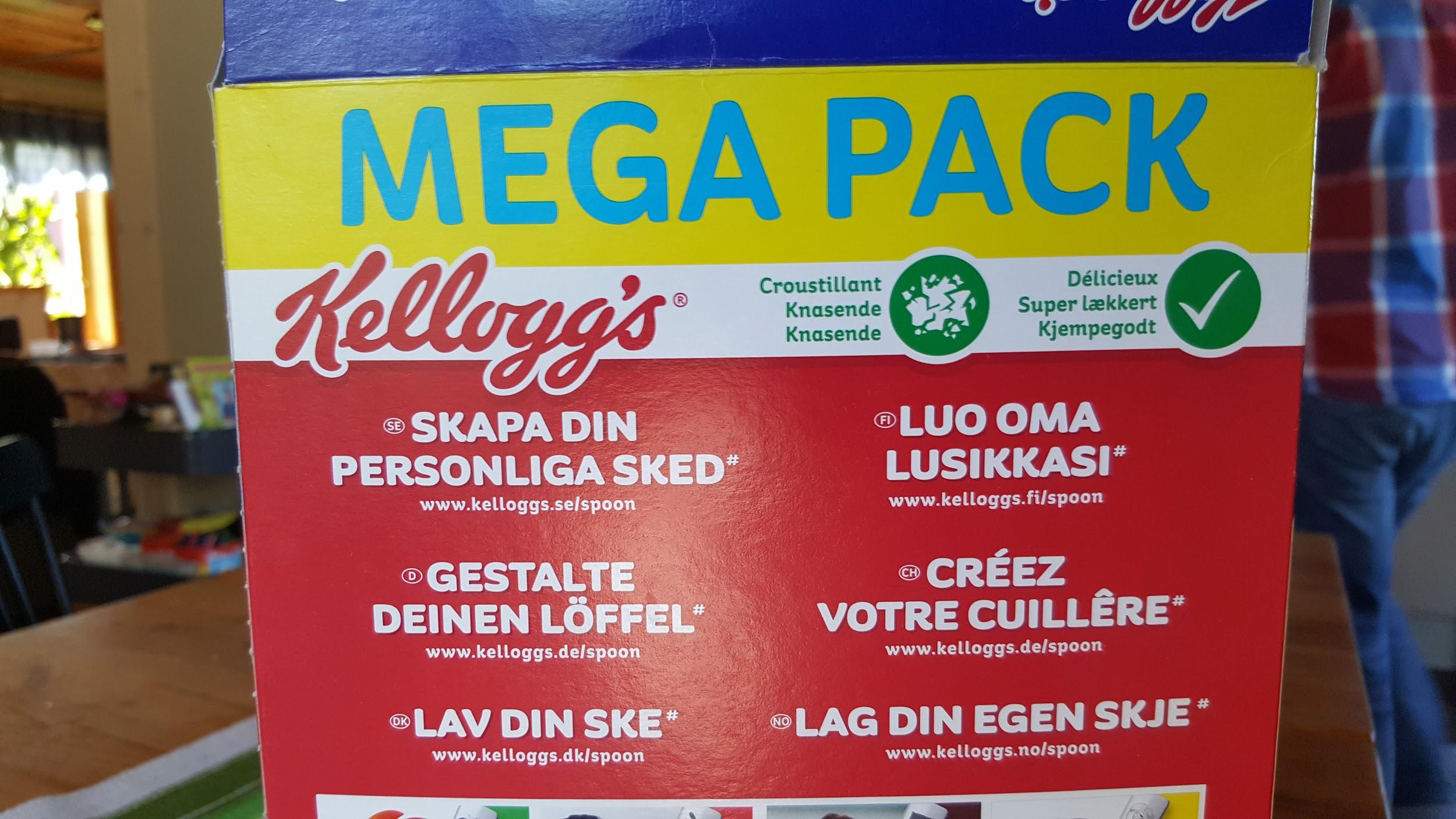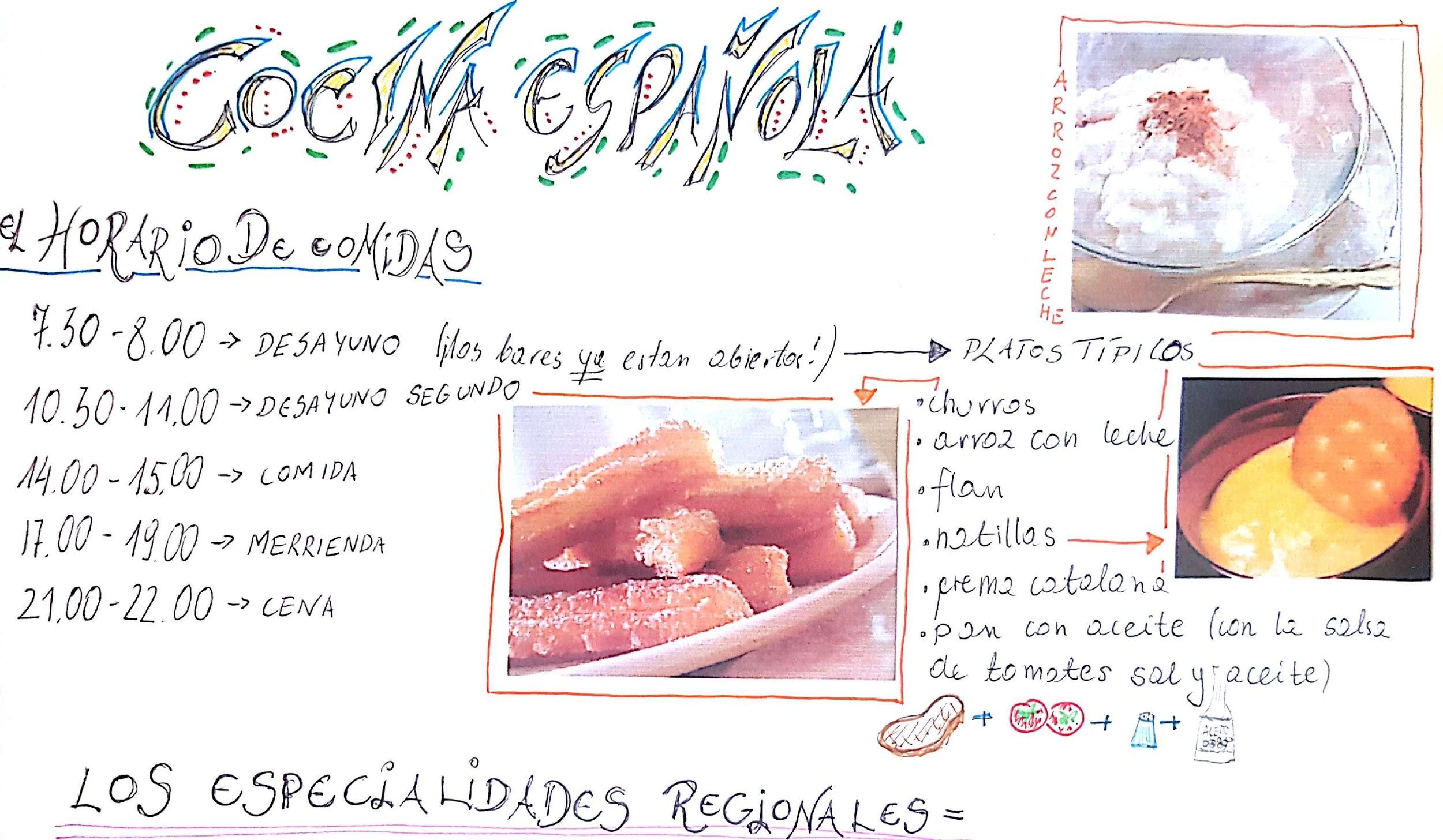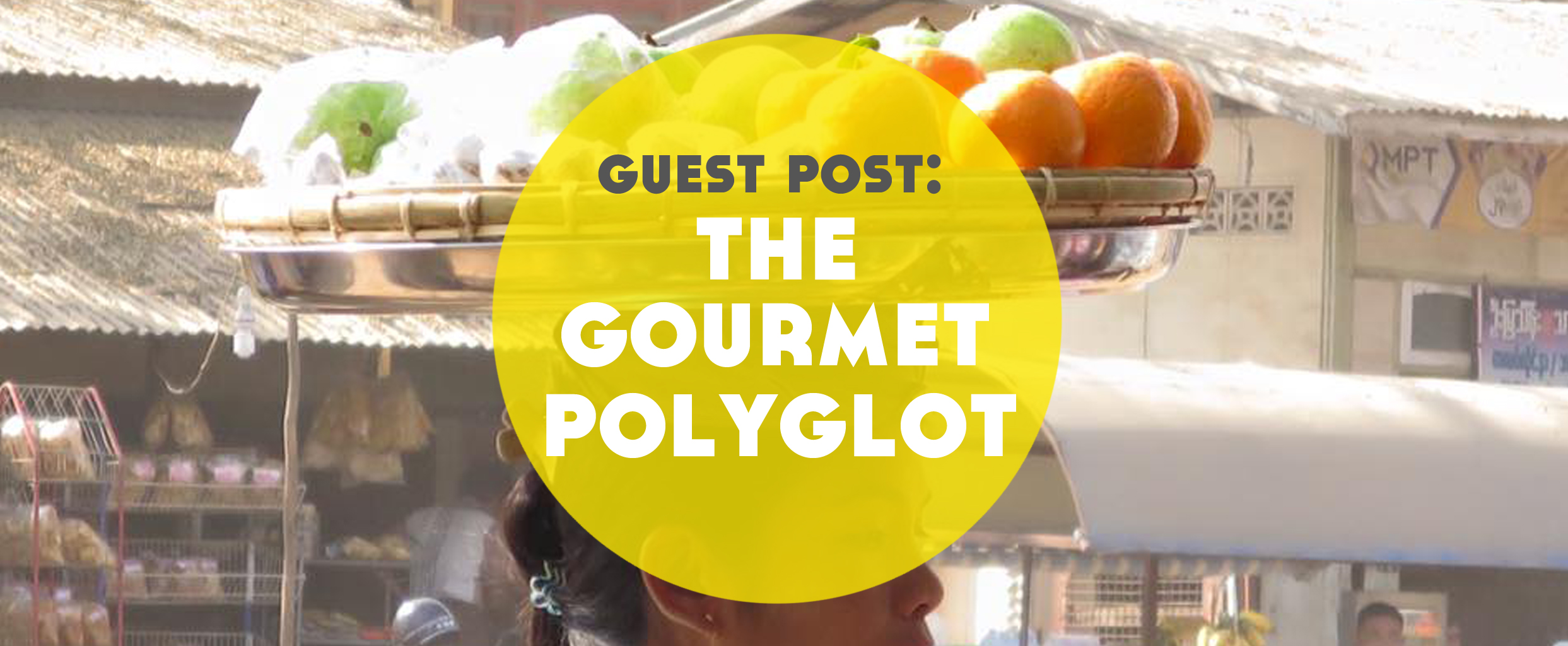August 24th, 2016
Guest Post: The Gourmet Polyglot: Learning Languages Through Food
We’ve got a guest post today from Philip at LinguaLift. It’s about food. I like food. And so combining food with language learning? I’m in. Enjoy!

Today, I will explore learning through an interest very close to my heart, or should that be, stomach. Surprisingly, there are many ways to continue learning as you shop, cook, and eat new foods, not to mention opportunities to explore foreign cultures.
1. Free trade to fluency
Whatever your opinion on globalization and free trade agreements, single markets often result in at least one benefit: packaging that resembles parallel bilingual graded readers more than marketing material.
Below is the back of a cereal box from Sweden:

Isn’t this wonderful? With little to no effort, your morning routine can now include not just milk and cornflakes, but also a daily lesson in three regional tongues.
Follow Hungarian polyglot Kató Lomb’s method of plowing through books in a foreign language, instead of artificial texts in textbooks, and you might make decent progress just by comparing food descriptions side by side.
2. Restaurant names are unforgettable
Ever noticed how many Italian words people across the world tend to know unconsciously, without ever having learnt them? I researched the question, but my hunch is that it has at least something to do with the popularity of Italian cuisine.
You’ve searched for hours for the best risotto in town, and finally made your choice. You can hear your stomach rumbling, and your mouth is watering as if you were one of Pavlov’s dogs. Will you forget the name of the place you’ve picked? Of course not! And with it, several new words will get ingrained in your brain.
Peperoncino, pomodoro, stazione, prezzo… they’re all right there, at the forefront of my mind… if only I knew what they meant!
Next time you decide to eat out, make sure to not just remember the restaurant’s original name, but also look it up in a dictionary. You’re likely to remember the word for years to come, and might even learn an expression or two as a bonus.
For example, the name of the Italian chain Vapiano comes from the saying: “Chi va piano va sano e va lontano”, or “Those who have an easy-going and relaxed approach go safe and far”.
3. Not a menu page unturned
Once you’re on the inside, the menu is your next language learning source.
Ask the server if they could give you a printout of the menu, or take a quick picture with your phone. I recommend using the app CamScanner, which will straighten the pages, make text nicely crisp and legible, and allows you to tag all your menu scans by language.
You might be tempted to just use Google Translate on the spot, but that will just help you make your order, not help you actually learn the language. For that, you need to study the menu in the comfort of your home, look up individual words, make flashcards, search for correct pronunciation and compare the way similar dishes are named in different restaurants.
In most good restaurants serving foreign food, the dish name will be written in the original language and script, with the English translation below. Just as you did with your European corn flake packaging, use this as an opportunity to compare and learn new words and simple grammar.
The additional benefit with menus is that many of the food names will repeat from restaurant to restaurant, giving you a chance to review your newly-learnt language at regular intervals.
4. Waiter chit chat
There’s also no reason not to strike a conversation with your chef or waiter! In most foreign countries, people really appreciate that you’re trying to learn their tongue, and will be glad to help you understand the menu, or tell you more about their work.
If you frequent an ethnic restaurant in your own country, try to make friends with the staff. They are often immigrants or children of immigrants, and tend to have really interesting stories to tell.
5. The recipe to language mastery

If you prefer home-cooked meals, try to wander out of the ordinary from time to time, and savour on dishes from lands afar. The best way, of course, is with grandma recipes, in the untranslated original! And while you’re at it, [why not invite your friends, and cook a meal together?](https://lingualift.com/blog/5-ways-to-practise-foreign-languages-through-fun-and-play/)
Recipes follow a predictable pattern of introducing the meal, listing ingredients, and presenting instructions step by step, so they’re really easy to follow even if you are a complete beginner. The structure, familiar units of measurement, and multinational sauce brands all make recipe books much more approachable than newspapers or fiction.
Start by translating each of the ingredients. You’ll find that many will share the same roots even across otherwise quite distinct languages. This is the effect of the spice trade, common origin of many staples, and the persistence of gourmands to resort to specific, local names of ingredients even when a simple English equivalent exists (think shoyu instead of soy sauce, or blinis instead of pancakes).
For example, here’s a fantastic map of the words for ‘orange’ in different languages.
The bitter Persian orange was introduced to Europe first, in the 11th century, and led to the adoption of the Persian word narang. In the 15th century, the Portuguese introduced a sweet variety of orange from India, and many countries adopted a variation of portokali to recognize their contribution. The Dutch, on the other hand, first imported oranges from China, which led to the word appelsien (lit. Chinese apple) spreading to the North.
6. Join an expat cooking class
The best way to practice a language is to engage in shared activities with native speakers. If you live in your target country, join a culinary class. If not, look around Meetup.com and expat forums to see if there is a foreign-language cooking group in town.
You should of course combine the course with the previous tip, bringing recipes you’ve found online, and exchanging them with other group members. You can be sure that you’ll not only improve your language, but also get a much deeper insight into foreign culture.
If no culinary classes exist where you live, tune in to a cooking show instead. Every country has them and some even publish all episodes on YouTube with Subtitles/Closed Captions so you can follow the transcript word by word.
Here’s our good friend Bobby Judo from Fukuoka, cooking Spaghetti Alla Gennaro, with instructions doubled in English and Japanese:
7. Understand people and culture
Food is central to the lives of people around the world, which makes it a unique way to understand local traditions and cultures. And as we all know, understanding culture is as important to language fluency as drilling vocabulary and grammar.
In the words of Stephen R. Wooten, a sociocultural anthropologist doing field research in Mali, ‘food creates society.’ How does the environment provide for us? How do we eat with other people? What can we learn from the globalization of our culinary traditions? There is no part of our life which cannot be analyzed and understood through food:
8. Reward yourself for your hard work
Last but not least, reward is a crucial part of habit building, and you can really spice things up with a funky Japanese DIY candy kit or nutritious Churchkhela.
So, what are you waiting for? It’s time to take a lunch break, and learn some mouthwatering words and expressions in the process!
Thanks Philip! Do you involve food with your language learning? How? Share your ideas in the comments!
___

Author’s bio:
Philip Seifi is the Co-Founder of LinguaLift, an online language school where learners enjoy the flexibility of a self-taught curriculum with the guidance of helpful study coaches. Read his complete language learning guide to get a head start.







